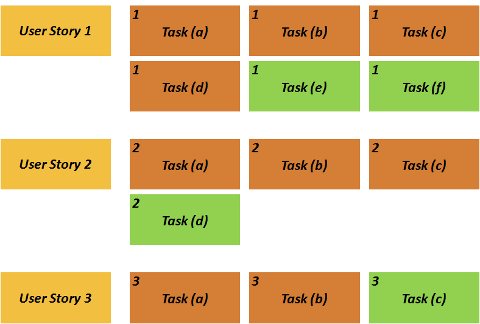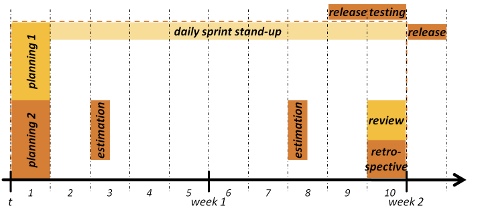SCRUM Planning2: Architecting the unknown – The HOW.
In SCRUM Planning2 the focus is entirely on the team identifying the HOW of the WHAT being introduced by the product owner during the course of Planning1.
In Planning1 the product owner described WHAT the user stories actually contain and WHAT the result of the finished stories should look like. Now the team has the challenge to discuss HOW this user story should be implemented. Planning2 is really essential to the team to discuss, plan, architect, argue and agree on how the business user story should be implemented in software. Both, Planning1 and Planning2 are essential activities for the team to finally commit to what they plan to deliver within this sprint iteration.
In our company, we had user stories where individual software developers were sitting days and days to solve one huge technological question. Before entering Planning2 we still were at one user story worth around 40 story points. During Planning2 the whole team came together and discussed the findings of the individual software developers. And magically, they came to a solution – valued 8 story points – implemented during this one sprint and delivered as commited. The miracle of communication!
Planning2 – in essence – reserves real quality time for the team to think through the challenges of the user stories. Allow time to discuss, to argue, to joke, to de-focus, to be creative. A good result of Planning2 is a whiteboard full of tasks associated with the user stories.
Ideally, the whiteboard contains a collection of tasks being identified during the discussions in Planning2. The sum of the tasks finally deliver the user story – the associated business value. In our Planning2 sessions we introduced a color coding scheme to reflect the kind of work to be done. Green – for example – stands for quality assurance testing tasks. The more experienced the team, the better the team members know each other – and trust them – the more trustworhty actually the result of Planning2.
When the team is finished with Planning2 they continue with the commitment. During commitment they discuss what user stories they are able and willing to commit. The commitment is “carved in stone”. The scrum master pushes the team to deliver their commitment and the product owner trusts on the team to actually deliver what they commited.
The commitment is all about trust and honor.
Lessons Learned?
- Allow the team to discuss and actually understand HOW they will deliver the WHAT
- Leave the team alone in a room – create an atmosphere of intimacy and privacy
- The team commits to deliver – the commitment is “carved in stone”
- Use color coding schemes for user story tasks



